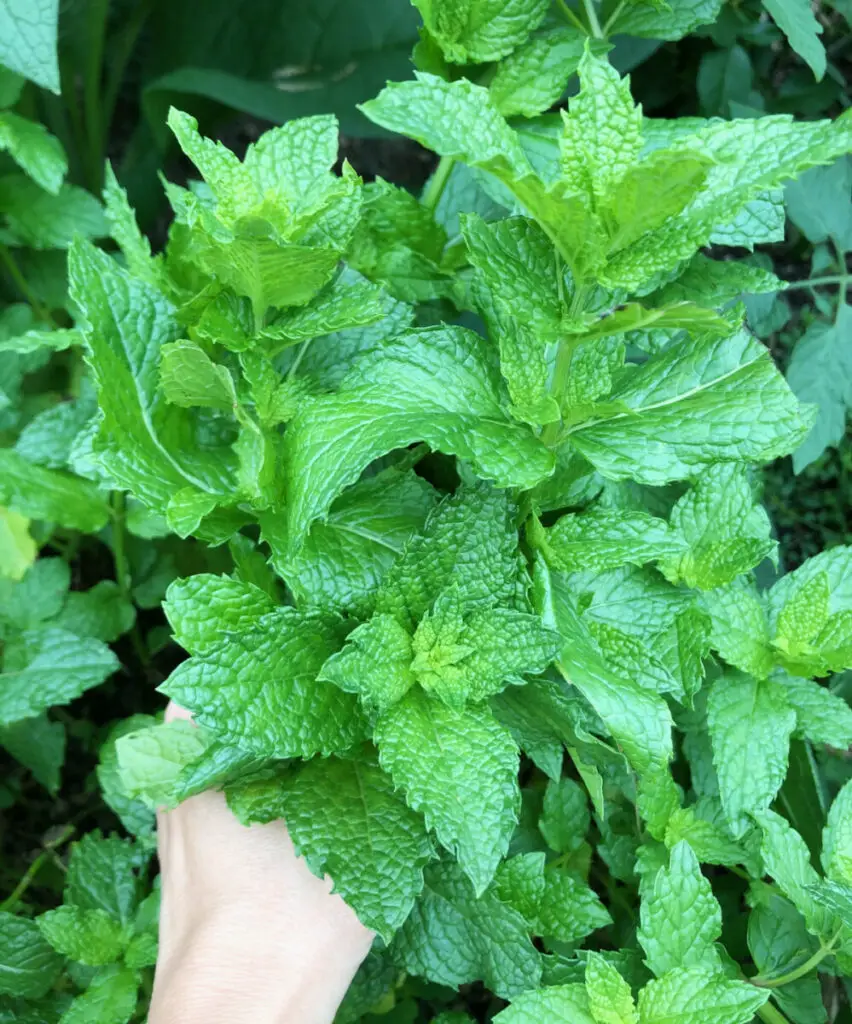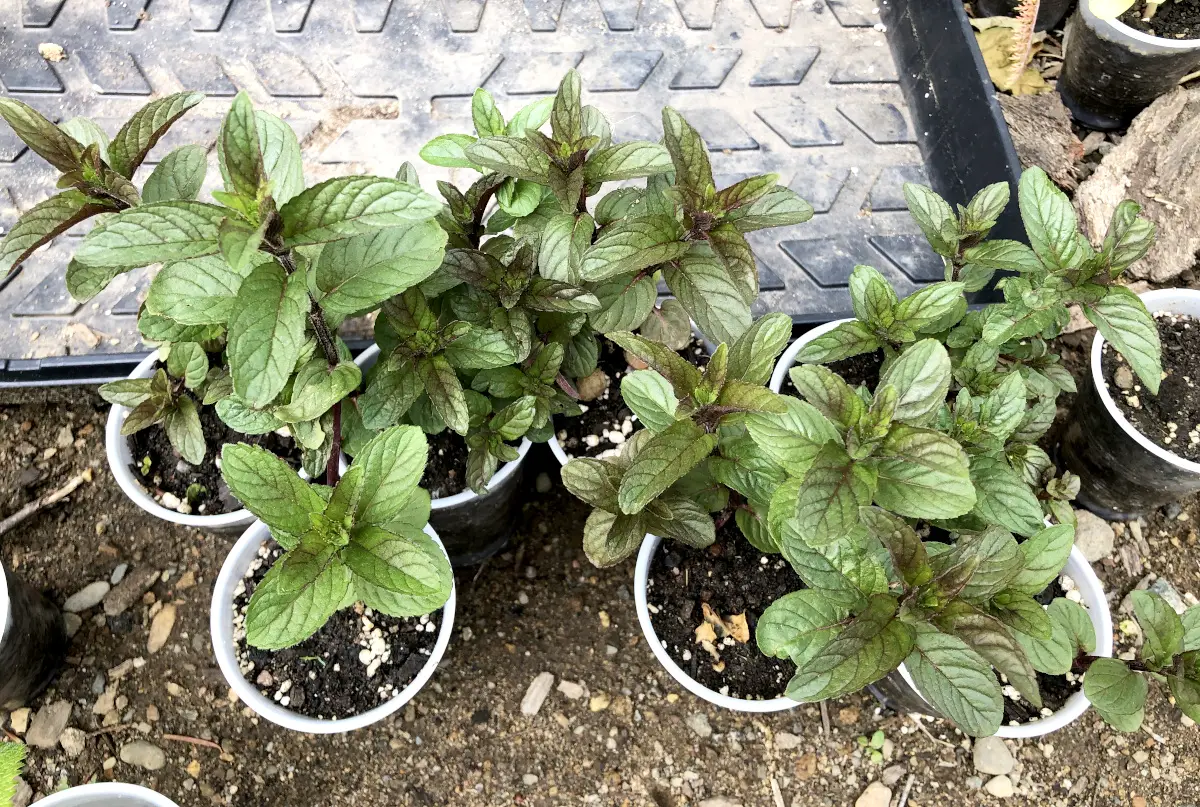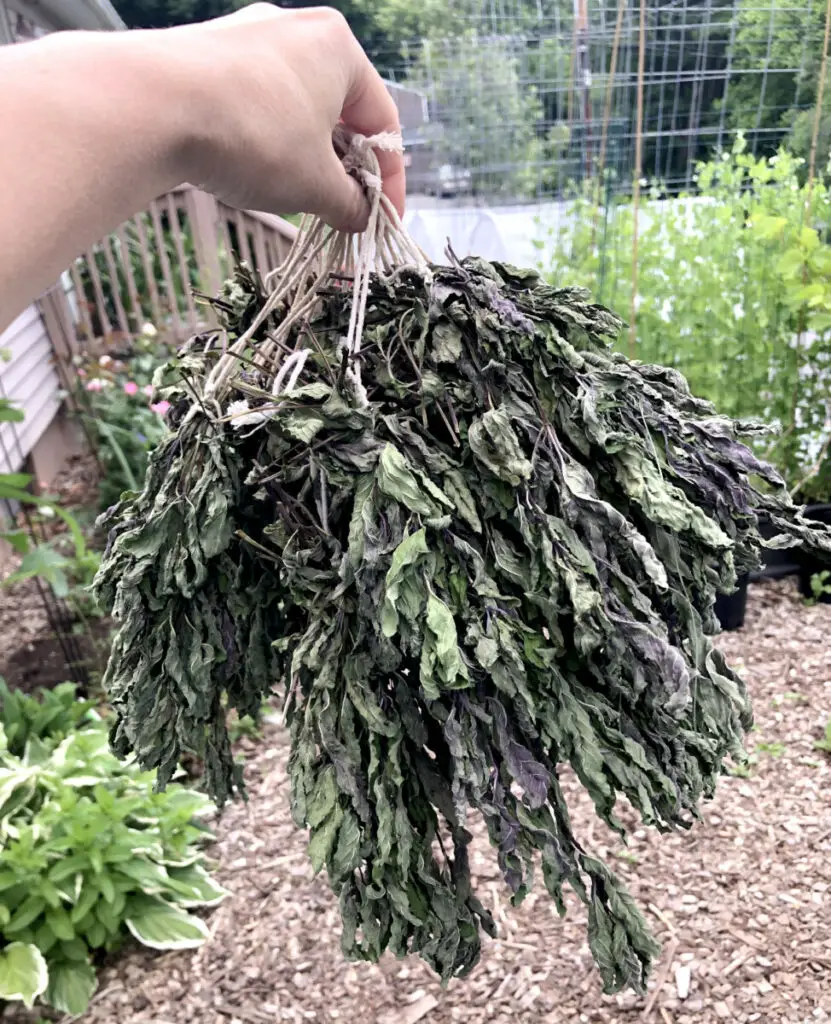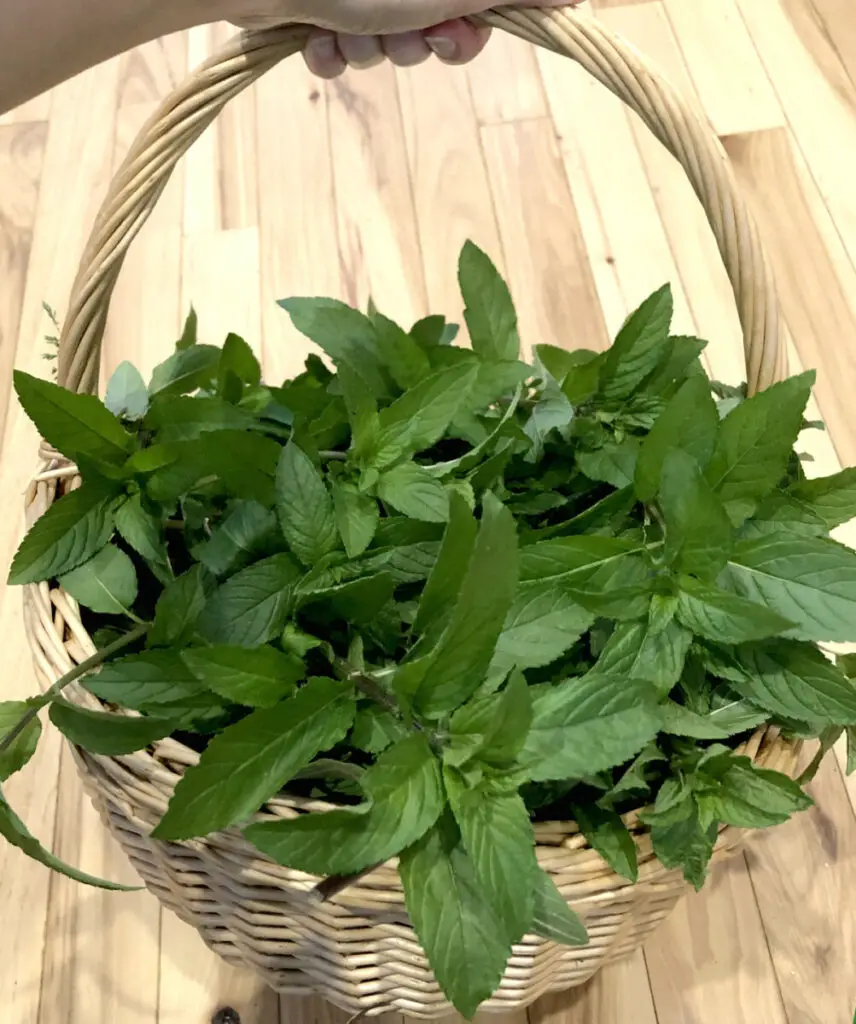Mint is a very delicious and popular herb that pairs well with sweet and savory dishes. It has a unique minty flavor and comes in lots of varieties. Growing mint is very easy, but if not careful, it can take over a whole growing space and wins competing with other plants every time! If you wish to grow min keep on reading and learn how to grow, control, contain, and propagate this delicious herb.
- Mint can be grown from seed, but is much easier and faster to propagate it from stem cuttings.
- If growing mint from seed, prepare the quality soil mix first and a suitable container for sowing. Well-draining and fertile soil will provide the best foundation for successful germination. Mix 4 parts of garden soil with 3 parts of compost and 3 parts of sand or perlite. Sprinkle the seeds but do not overcrowd them on the top of the soil and cover them with about ¼ of the same soil mix. Tamp the top of the soil to gently firm the surface and water thoroughly with a gentle shower or spray.
- Use a humidity dome or a plastic bag to create a humid and warm climate for the seeds to germinate faster. A humidity dome or plastic cover will keep the soil moist and warm.
- Dot not let the soil dry out as this would slow down the germination process and could kill sprouting seeds.
- The best is to start mint from seeds in spring, or summer when the weather is warm so the seeds germinate fast and have plenty of time to grow and establish themselves.
- Remove the humidity dome or plastic cover once the seeds have sprouted. Some seeds could sprout in about 10-15 days. Other seeds might take longer to sprout, just be patient.
- Ensure the soil is moist, but not too damp.
- Transplant mint seedlings when they have 2 or 3 sets of true leaves into their permanent pot or container.
- Because mint grows roots along the whole stem, and sends out shallow lateral roots they spread very fast and can become invasive taking over the whole growing space. It is best to keep the main contained and controlled. Plant mint in containers or pots with drainage holes but ensure the holes are not touching the ground as the roots will peak out and root into the soil. Use saucers under the pots or set the pots on cement or other surfaces that have no soil to prevent the roots from spreading.
- Because mint sends out roots along the whole stem, it is very easy to propagate from cutting. Take cuttings from a well-established mother, using the healthiest stems. Cut about 3 inches long and remove all the leaves accept the top 3-5 ones. Place the cuttings in a cup of water and let it root. Keep the cuttings in water in a warm, bright place but out of direct sunlight. Mint should send out roots in about 3-4 weeks. Once the roots are about an inch or two long, plant the cuttings in their permanent container.
- Mint thrives best in a sunny location but can grow well in some shade too.
- Harvest mint in bundles by bundling the plant stems and cutting them about 3 inches from the top of the soil. Tie the bundles and dry them hanging upside down in a dark dry space. Once completely dry, store in air-tight containers.
- Mint is a great cut-and-come-again herb and can be harvested by only pulling the largest outer leaves from the bottom up while leaving the smaller younger leaves to grow for the next harvest.
- Water mint when the top of the soil is dry and crumbly. Mint can tolerate drought. In fact, it is a great plant to grow for those who have brown thumbs!
- Mint is a perennial herb, that comes back every year. It is very hardy and survives low winter temperatures without problems. Mint is generally hardy to -20F.

Does mint like sun or shade?
Mint thrives best in sunny locations but does well in partial shade too.
Years ago, I planted mints in my growing space just freely. Yes, it has spread into the whole growing space, and guess what? It is not a disaster to me; it is money growing in my garden all on its own. I sell it potted and in bunches. Every time my mint spreads, I dig out the roots, pot it and sell it. I purchased 3 different varieties of mint, chocolate, orange, and mojito mint. It is attractive to the buyers to get all three as all three taste, look, and smell different. Many people have no idea there are many varieties of mint, they are amazed to see all of my tiny collection.
A GOOD READ: How to start a container garden for beginners AND How to start a vegetable garden

I live in a location where many properties are shaded by trees. Mint is a perfect herb to grow partially shaded. For me, mint grows wherever I plant it, even in the shade. If you have shady spots, grow mint there, but would recommend planting in containers unless you are willing to dig it out year after year. Have I known better, I would just plant it in a large container instead of feely in my growing space, but as a beginner gardener I did not know better. Now I view mint as my abundant friend that I work with rather than an enemy I planted years ago.
Is mint easy to grow?
Yes, mint is easy to grow. Mint is one of the easiest plants to grow. It survives drought well. It is a perennial plant, meaning it comes back every year after winter and survives very low freezing temperatures. It does not attract many pests and is deer and wildlife-resistant, meaning most wildlife does not like to eat mint. It is easy to propagate from cuttings and can be harvested multiple times during the growing season. It can be used in cooking, drinks, and salads. Mint is easy to preserve by drying the leaves and stems in bunches and kept in air-tight containers, or frozen in zip-lock bags.
What is the easiest food crop to grow?
A GOOD READ: When and how to grow herbs AND What herbs do not come back next year?

I dry mine for mint tea by simply cutting mint in bunches. I bunch several stems together, wash them, and tie them. Then I hang them upside down in my shed and store them in air-tight glass jars. To me, mint is the easiest plant, and herb to grow. Mint thrives on neglect!
How do I grow mint in my backyard?
Choose a sunny location and sow mint by seed in pots or plant a seedling in a pot. Keep mint contained or it will spread and take over the whole growing space in only one growing season. Plant it in a well-draining, fertile soil mix and water as needed when the surface of the soil dries a little. Mint does not like to sit in damp soil and can tolerate drought periods. It is not a demanding plant and can thrive on neglect, but does not like the soil completely dried out. Remember, pots and containers dry out faster than an in-ground or a raised bed garden, therefore check regularly for watering. If not harvesting often, trim the mint plant to increase production and maintain a healthy appearance of the plant.
I grow mint in the ground freely, but also in pots contained, and in both places, it does well. Potted ones need regular watering because in general soil in pots dries out faster, but mint is very forgiving and proffers rather drier soil than too much moisture.
How do you maintain a mint plant?
The best is to maintain a mint plant by regular harvesting, or trimming. Water regularly and do not let the soil in the container dry out completely. Most mint plants bounce back if the soil dries out by accident, but do not let the soil dry out often or in prolonged periods. For the plant to thrive best, place mint in a sunny location and fertilize with nitrogen-rich fertilizer as needed or add organic matter like compost and worm castings. Mint is easy to maintain and thrives on neglect.

I do not pay much attention to mint, it kind of grows on its own. I fertilize it when I fertilize my whole garden using this liquid concentrate, and I do not babysit my mint plants at all. It is the easiest plant to grow and a heavy producer. If you buy lots of mints or like the taste of it, then I would recommend growing it as mint is very easy to grow, and maintain and produces so much you will soon be giving it away to your family and friends.
Does Mint come back every year?
Yes, mint is a perennial plant and very hardy. Perennial plants come back every year after winter. Mint can withstand temperatures as low as -20F.
What herbs come back every year? AND Why to grow herbs
Can you eat mint leaves?
Yes, mint leaves as well as stems are edible and delicious.
Why does my mint plant keep dying?
The reason mint plant keeps dying is poor soil conditions, irregular watering, or poor sanitation. In general, mint is an easy plant to grow. Ensure the soil is well-draining, fertile, and airy for healthy roots. Ensure the soil is fertile and full of organic matter. Do not let the soil dry out but rather keep it moist, not damp or wet. Moist soil should feel moist, and when squeezed in the palm of your hand it should hold the ball shape but should easily crumble using fingers, it should not drip drops of water. Fertilize mint using nitrogen-rich fertilizer. Plant mint in a clean vessel. If needed disinfect the pot before planting. Trim mint plants regularly by harvesting or trimming. Trimming will encourage vigorous growth. Provide a sunny location or partial shade.
I have never had any mint die. If that happened to you, then I would recommend buying an established, mature plant from the store, local garden center, or nursery. Then transplant it into a larger pot using a potting mix from the store. Water when the soil feels dry on the surface and your plant should be fine. To fertilize it easily, simply use these fertilizer spikes and follow the instructions on the packaging.
Does mint keep growing after you pick it?
Yes, mint is a great cut-and-come-again plant. Harvest in bundles the whole stems about 3 inches from the bottom of the soil or harvest only heaves by picking the largest ones from the bottom up. Leave plenty of small leaves on the plant so the plant can recover quickly. Come in about two weeks to harvest again.


